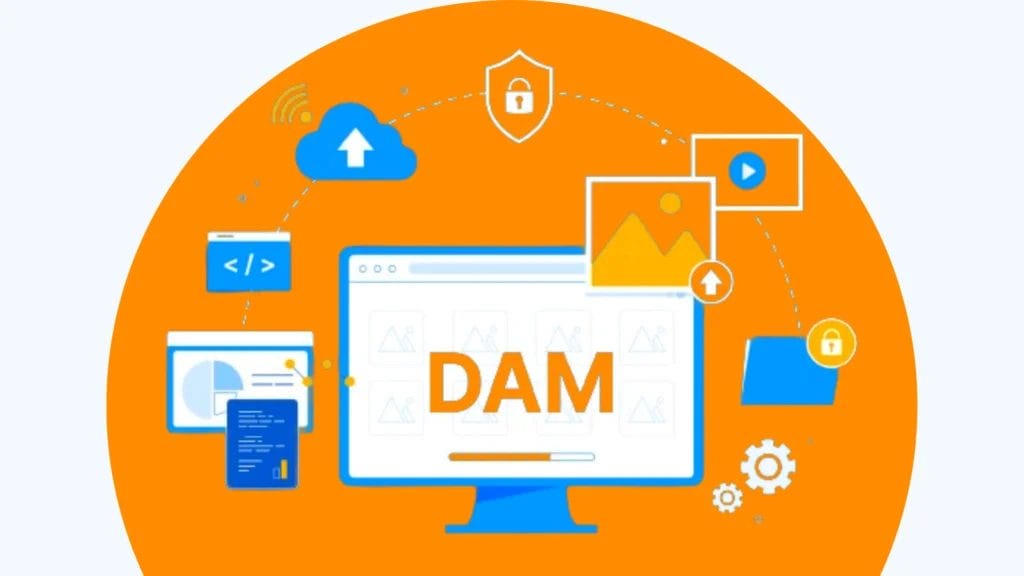Benefits of Digital Asset Management
- Digital Asset Management

What is Digital Asset Management?
In today’s digital-driven world, businesses are constantly creating and managing troves of digital assets, ranging from images and videos to documents and presentations. These assets form the backbone of marketing campaigns, brand communication, and internal operations. However, effectively managing and utilizing these assets can be a daunting task, often leading to inefficiencies, inconsistencies, and security risks.
Enter digital asset management (DAM), a revolutionary solution that empowers businesses to organize, store, share, and track their digital assets with unparalleled efficiency. DAM systems serve as centralized repositories, bringing together all your assets in one secure and accessible location. This centralized approach eliminates the chaos of scattered files and fragmented workflows, transforming the way businesses manage their digital content.
Key Benefits of Digital Asset Management
Digital asset management (DAM) offers a centralized location for storing and organizing digital assets, making it easier to search, retrieve, and distribute files. By utilizing DAM, businesses can improve workflow efficiency, streamline collaboration, ensure brand consistency, and enhance security. Additionally, DAM provides valuable insights into asset usage and performance, helping organizations make informed decisions about their content strategy.
Organizing and Categorizing Digital Assets
When you organize and categorize your digital assets, you can easily locate and manage your files. This saves time and effort in searching for specific assets and helps maintain a more efficient workflow. By tagging and organizing your digital assets, you can ensure that they are readily accessible and can be used effectively for different projects. Additionally, organizing and categorizing your digital assets helps maintain consistent branding and messaging across different platforms and channels.
Streamlining Asset Access and Retrieval Processes
Organizations use digital asset management (DAM) to organize and store digital assets. Digital assets may include images, videos, documents, and more. DAM systems make it easier for teams to access and retrieve these assets, saving time and reducing the risk of losing important files. It is essential for businesses to have an efficient DAM system in place to maintain control over their digital assets and streamline their workflows.
Collaborative Workflow and Version Control
Digital asset management (DAM) systems allow for collaborative workflow and version control, enabling teams to work together on the same assets and access the most up-to-date versions. With DAM, users can track changes, review and approve modifications, and ensure consistency across all assets. This helps streamline processes, reduce errors, and improve efficiency in managing digital content.
Cost and Time Savings with Digital Asset Management
The use of a digital asset management system enables you to easily organize and locate your digital files, reducing the time spent searching for specific assets. Additionally, with centralized storage and streamlined workflows, you can avoid duplicate efforts and increase productivity. This results in significant cost savings over time as well as improved overall operational efficiency.
Enhancing Brand Consistency and Control
With digital asset management, businesses ensure consistent branding across all marketing materials, maintaining control over brand integrity. This means that all logos, images, and graphics will have the correct colors, fonts, and design at all times. It also enables easy access to approved assets, reducing the risk of using outdated or unauthorized materials. Efficiently managing digital assets helps in creating a unified brand identity and a professional, polished image for the business.
Improving Security and Compliance
To improve security and compliance, digital asset management systems provide secure storage and access control for your digital assets. This means that you can easily manage who has access to your files and ensure that only authorized individuals can view and edit them. Additionally, these systems often come with features that enable you to track the usage and distribution of your assets, helping you to stay compliant with copyright and usage regulations.
Integrating with Existing IT Ecosystem
Most digital asset management systems integrate with other popular software and systems, making it easier to access and manage your digital assets from one centralized location. This integration allows you to streamline your workflow, reduce time spent searching for files, and improve collaboration among team members. The seamless integration also ensures that your digital assets are easily accessible and usable across various platforms and tools, enhancing the efficiency and productivity of your overall digital asset management process.
Conclusion
In conclusion, digital asset management offers numerous benefits to businesses of all sizes. An effective DAM system significantly improves the organization, accessibility, and security of digital assets. It streamlines workflows, enhances collaboration, and ensures brand consistency. By centralizing assets and simplifying their retrieval, DAM reduces the time and effort spent searching for files, ultimately boosting productivity. Furthermore, the ability to track usage rights and monitor asset performance leads to informed decision-making and improved overall marketing strategies. In essence, investing in a robust solution has proven to deliver substantial value and a competitive advantage to any modern business.
To delve deeper into how a DAM platform can benefit your business, we invite you to a consultation. Whether you are just starting or refining existing processes, our experts will help validate your requirements and guide you toward selecting the ideal DAM solution. Elevate your digital asset management—schedule your free consultation now and unlock the true potential of your assets. Click below or contact us directly.
Schedule your Free Consultation with a DAM Expert